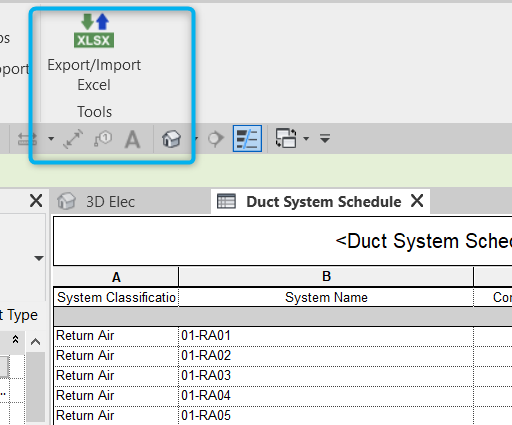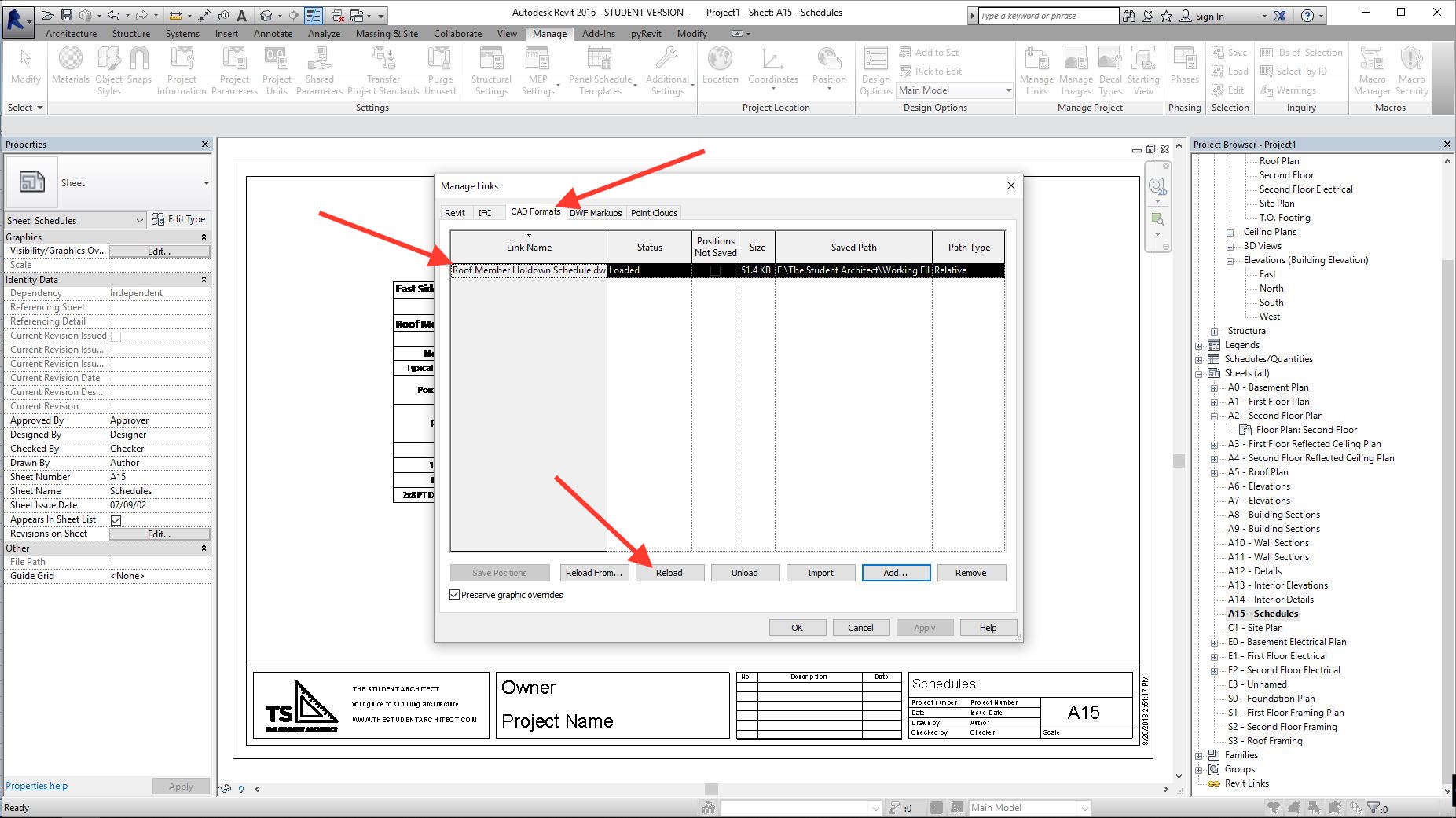Unlock New Opportunities with Innovative Revit Plugins
Wiki Article
Excel-to-Revit: A Game-Changing Process for Architectural Design - Introducing the Secrets
Introducing excel-to-revit, the game-changing process that will certainly reinvent your style procedure. With excel-to-revit integration, you can enhance your architectural style, unlock performance, and make the most of partnership within your team. Get prepared to take your architectural style to the next level with excel-to-revit!The Power of Excel-to-Revit Combination

Visualize the benefit of being able to edit and update job data in Excel, and quickly see those changes mirrored in your Revit version. Say goodbye to hand-operated data access or tiresome updates. With Excel-to-Revit integration, you can save time and lower mistakes by leveraging the power of Excel's solutions and functions to automatically produce precise information in Revit.
Not only does this combination boost efficiency, but it additionally improves cooperation among employee. You can quickly share Excel documents with coworkers, that can after that import the information right into their Revit models. This promotes a smooth exchange of information and makes sure that every person is dealing with one of the most updated information.

Improving Building Design With Excel-To-Revit
Streamlining architectural design is made easier with using Excel-to-Revit (revit tool). With this powerful integration, you can optimize your workflow and conserve beneficial time throughout the layout process. By leveraging the capabilities of Excel and Revit, you can effortlessly transfer information in between both systems, getting rid of the need for manual data access and minimizing the threat of errorsExcel-to-Revit enables you to import and export information effortlessly, enabling you to conveniently update and modify your building layouts. You can create timetables, compute quantities, and produce records in Excel, and after that transfer that information straight right into your Revit version. This integration makes sure that your layout information is always up-to-date and synchronized, getting rid of the demand for hand-operated updates and lowering the possibilities of disparities.
By making use of Excel-to-Revit, you can also capitalize on the effective computational abilities of Excel. You can carry out intricate estimations, assess data, and automate repeated tasks, all within Excel. With just a couple of clicks, you can import the outcomes back into Revit, permitting you to make enlightened layout choices and optimize your building styles.
Opening Effectiveness: Exploring the Excel-to-Revit Workflow
Maximize your efficiency by flawlessly incorporating Excel and Revit for an extra efficient process. With the Excel-to-Revit process, you can open a whole new level of effectiveness in your building design procedure. By utilizing the power of Excel's information monitoring abilities and incorporating it with the versatility and accuracy of Revit, you can simplify your design procedure and conserve valuable time.One of the vital benefits of this combination is the capacity to import and export information in between Excel and Revit. This implies that you can quickly transfer project details, such as area routines or material amounts, from one software application to the other, eliminating the need for hand-operated information entrance and minimizing the opportunities of mistakes. You can additionally produce customized solutions and estimations in Excel to automate recurring tasks and execute complex computations, which can then be seamlessly integrated into your Revit versions.
In Addition, the Excel-to-Revit process permits for much better sychronisation and cooperation in between team participants. With Excel working as a central information center, numerous employee can work with various facets of the job all at once, sharing and upgrading information in real-time. This not just boosts communication however additionally ensures that everyone is dealing with one of the most updated data, getting rid of the danger of disparities.
Making Best Use Of Collaboration: Excel-to-Revit for Architectural Teams
By seamlessly incorporating Excel and Revit, building groups can substantially enhance collaboration and achieve a lot more effective design end results. When using this effective workflow, you can easily move data in between Excel spreadsheets and Revit designs, enhancing the design process and enhancing communication among team participants.Moreover, by leveraging Excel's powerful estimation capabilities, you can carry out intricate computations and evaluation on your design information, giving valuable insights and driving notified decision-making. This revit plugins combination likewise enables you to export data from Revit to Excel, enabling you to produce comprehensive records, charts, and graphs for discussions and analysis. This collective operations promotes efficient interaction and control among staff member, as Excel works as a main center for information administration and sharing.
Total, by embracing the Excel-to-Revit process, architectural groups can achieve greater degrees of cooperation, efficiency, and precision in their style procedure. revit tool. This combination encourages groups to function with each other flawlessly, making certain that everyone gets on the very same web page and adding to the success of the job
Introducing the Keys of Excel-to-Revit Integration

Among the secrets of Excel-to-Revit assimilation is the ability to utilize the power of solutions and computations in Excel to drive criteria and generate complicated geometries in Revit. You can connect Excel spread sheets to Revit family members, enabling you to input data straight right into the spreadsheet and have it immediately upgrade in the Revit design. This simplifies the layout procedure and guarantees precision and consistency throughout the job.
Another key is the capacity to develop custom-made timetables and reports in Excel, making use of information drawn out from Revit. This enables you to examine and imagine project details in a manner that is not possible within Revit alone. You can conveniently create quantity liftoffs, expense estimates, and project timelines, giving beneficial insights for decision-making and task management.
In addition, Excel-to-Revit assimilation makes it possible for reliable collaboration among employee. Multiple users can work with the same Excel spread sheet at the same time, making it much easier to collaborate and track modifications. You can also utilize Excel's commenting feature to give feedback or communicate design alterations.
Verdict
So there you have it, the secrets of excel-to-revit integration have been revealed. This game-changing process has the power to streamline building layout, unlock performance, and optimize collaboration for architectural teams. By combining the power of Excel and Revit, architects can currently function extra successfully, save time, and create much better styles. So why wait? Start including excel-to-revit assimilation right into your architectural design procedure today and transform the means you work.With just a few clicks, you can import the outcomes back into Revit, permitting you to make enlightened layout decisions and maximize your architectural layouts.
By using the power of Excel's data monitoring capacities and combining it with the adaptability and accuracy of Revit, you can improve your layout process and save beneficial time.
By effortlessly incorporating Excel and Revit, architectural teams can substantially improve partnership and accomplish more efficient layout outcomes. When using this powerful process, you can quickly transfer information in between Excel spread sheets and Revit models, improving the style process and boosting communication among group participants.In addition, by leveraging Excel's effective estimation abilities, you can execute complicated calculations and evaluation on your layout data, giving useful insights and driving notified decision-making.
Report this wiki page